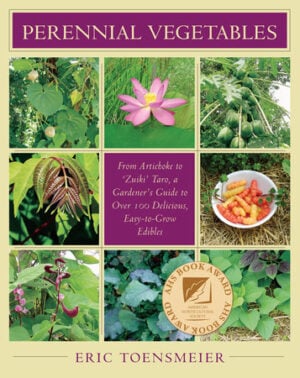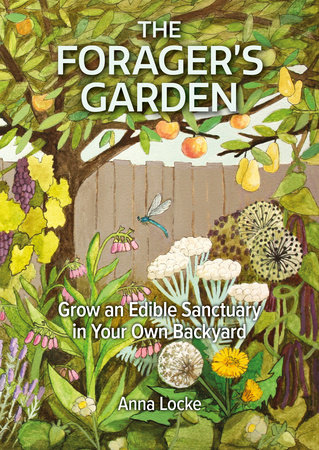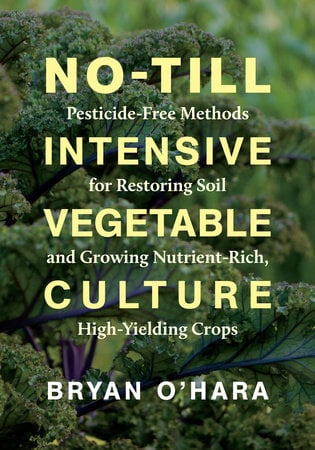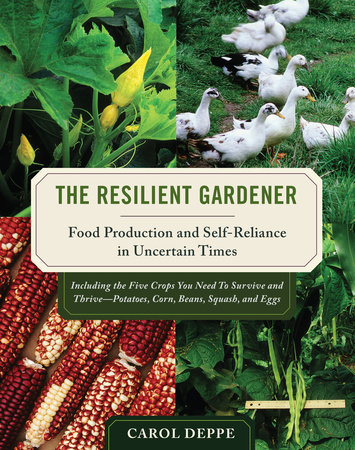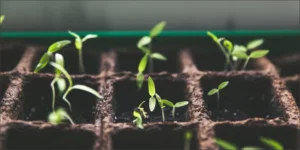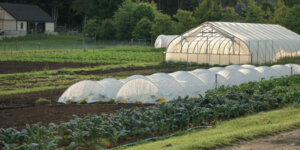Low-Maintenance Perennials for Your Garden
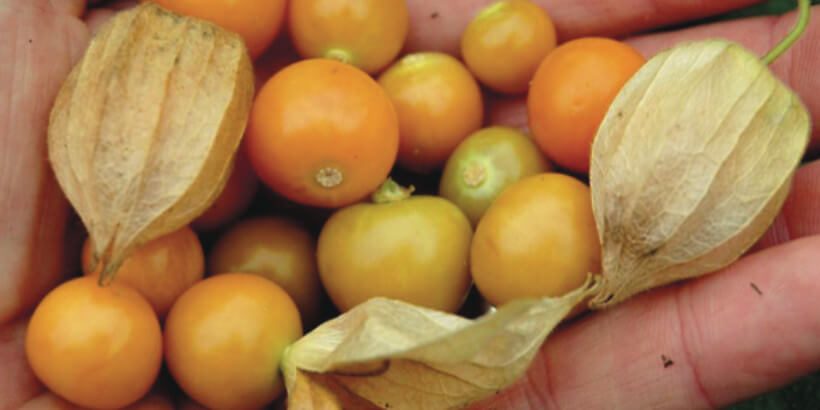
Have you ever wondered about growing perennials? Now’s a better time than ever to get started with them. Here are some low-maintenance perennials suited for gardeners of all interests and abilities!
The following is from Perennial Vegetables by Eric Toensmeier. It has been adapted for the web.
Perennials: General Overview, History, and Ecology
Around the world there are many edible species in the genus Physalis, including the zesty tomatillo (P. ixocarpa). Here we will consider two very similar species, the tender perennial goldenberry (P. peruviana) and the self-seeding annual ground cherry (P. pruinosa).
Both species are sprawling, woolly-leaved herbs somewhat resembling tomatoes or eggplants. The sweet yellow fruits are encased in a papery sheath like the related Chinese lantern (P. alkekengei). Fruits are usually 1⁄2–3⁄4 inch, although some varieties of goldenberry are larger.
The unique flavor of the fruits is sweet, slightly nutty, reminiscent of a tomato, and a bit musky. Ground cherries are delicious eaten fresh and are also excellent in sauces, especially when poured hot over ice cream. You can also peel back the paper husk and use it as a handle to dip the fruits in chocolate.
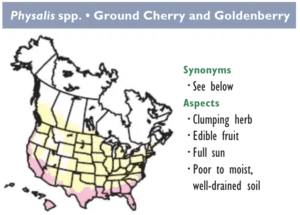
Image from Perennial Vegetables
Peruviana (Goldenberry, Cape Gooseberry, Ground Cherry, Poha)
This perennial Physalis originates in the Andes. It is grown in gardens in mild climates around the world, and may soon become a major cultivated crop. Researcher David Klinac reports (as quoted in Lost Crops of the Incas), “If you’re nice to it, you get a jungle. You get vast numbers of fruits per bush, but the effort of cutting your way in is enormous. It’s best to be as hard on the plant as possible.”
For this reason plants are usually grown in poor soils, where they fruit quite well. Goldenberry will not set fruit well in intense heat and humidity, but requires warm nights.
Hardiness Levels: Plants are hardy through Zone 8, but need a long growing season to ripen fruit. If started indoors they can also be grown as annuals in colder climates, although some varieties have too short a season.
Their climate limitations make them well suited for parts of California and upland Hawaii, but they are not well adapted to the rest of the United States or Canada. By cutting back plants after harvest, their productive life can be stretched out to about four years. Named cultivars include ‘Giallo Grosso’, ‘Golden Nugget’, and ‘Goldenberry’. Some fruits of the cultivar ‘Goldenberry’ reach 2 inches across.
Pruinosa (Strawberry Tomato, Husk Tomato, Ground Cherry)
This annual species is a prolific self-seeder, making it functionally perennial in most gardens. Plants can also be started indoors to get a jump on the season. For gardeners unable to grow P. peruviana, this species is a good substitute. The flavor is excellent and there are several named cultivars available, including ‘Aunt Molly’s’, ‘Cossack Pineapple’, and ‘Goldie’. This species is also known as P. pubescens.
Crop Description: Both species are straggly, shrub-like herbs with woolly leaves.
Climate: Goldenberry (P. peruviana) requires long seasons free of excessive heat or cold. It is best suited to southern and coastal California and upland Hawaii. It can be grown elsewhere to some degree, but often will not fruit well. It is hardy to Zone 8 as a perennial and can be grown as an annual in long-season areas. Strawberry tomato (P. pruinosa) can be grown in much of the United States and Canada. Some varieties fruit in as little as 60 days from seed. Starting plants indoors can give you an extra boost.
Tolerances and Preferences: Both species should be grown in full sun. Apparently they should get plenty of water when growing vegetatively and little water when fruiting. Goldenberry should be grown in poor soils for the most manageable fruit production.
Naturalization Status: Goldenberry has naturalized in California, Hawaii, and (surprisingly) Kentucky, New Jersey, and Massachusetts. Strawberry tomato is native to most of North America and has naturalized in Hawaii.
Pest, Disease, and Weed Problems: Both species are affected to some degree by the common pests and diseases of solanaceous crops.
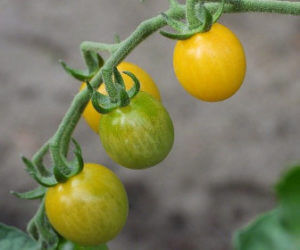 Propagation and Planting: Both species are easy to grow from seed. Goldenberry is also grown from cuttings, although only about a third of cuttings take. Goldenberry can also be air-layered. Cuttings and air layers fruit more quickly than seedlings. Space ground cherries at 3–4 feet.
Propagation and Planting: Both species are easy to grow from seed. Goldenberry is also grown from cuttings, although only about a third of cuttings take. Goldenberry can also be air-layered. Cuttings and air layers fruit more quickly than seedlings. Space ground cherries at 3–4 feet.
Other Cultivation Information: Plants should be staked or grown in tomato cages for ease of harvest.
Harvest and Storage: Fruits fall off the plant when ripe. Their husk protects the fruits from getting dirty. Fruits can also be picked when the husks turn dry and papery. Spreading a cloth under plants and shaking is also effective. Fruits that are still slightly green can be ripened inside. Yields can be very high. Fruit stored in a cool, dry place will last for several weeks.
Uses: The fruits are delicious raw and can also be cooked to make sweet or savory sauces. They can be sun-dried like raisins. For a fruit, the protein and phosphorus contents are very high. Fruits are also high in vitamins A and C. Note: The leaves and unripe fruits are toxic.
Related Species and Breeding Potential: Breeding longer-lived and hardy ground cherries for home gardens would be interesting. There are several hardy perennial Physalis species with edible (though inferior) fruits. All have a running habit and form colonies. Especially interest- ing is the ornamental Chinese lantern (P. alkek- engei).
The Chinese lantern botanical variety ‘Franchetti’ has larger fruits and would be a good choice for crossing. (Note: The husks of Chinese lantern are poisonous.) The widespread native perennials P. heterophylla and P. subglabrata would be good hardy perennial parents as well. Heat- and drought-resistant plants could be bred from the southwestern native edible P. crassifolia. Ground cherries are apparently difficult to cross with the related tomatillos (P. ixocarpa and P. philadelphica).
Recommended Reads
How to Create a Nitrogen-Rich, Compost-Fed Soil Bed on Your Patio
Recent Articles
Want to keep growing food during the cold months? Try growing winter carrots in your cold house! These are even sweeter & more flavorful than spring carrots!
Read MoreSearching for the perfect book to give the homesteader in your life? We’ve got your go-to books for anyone interested in organic growing, permaculture, soil health, year-round growing & more! What’s their next great read?
Read MoreWinter is coming… but that doesn’t mean you should put away those tools just yet. Extend the growing season well past the first frost!
Read MoreThe following excerpt is from Grow a New Garden: Plan, design and transform any outdoor space by Becky Searle. It has been adapted for the web. If you’re not a gardener yet, and you have never unashamedly added horse manure to your Christmas list, you might be tempted to skip this chapter. But even if…
Read MoreLiving in a colder climate doesn’t mean you need to give up on more fragile plants. By preparing plants for the winter, you’ll set them up to survive and thrive.
Read More

